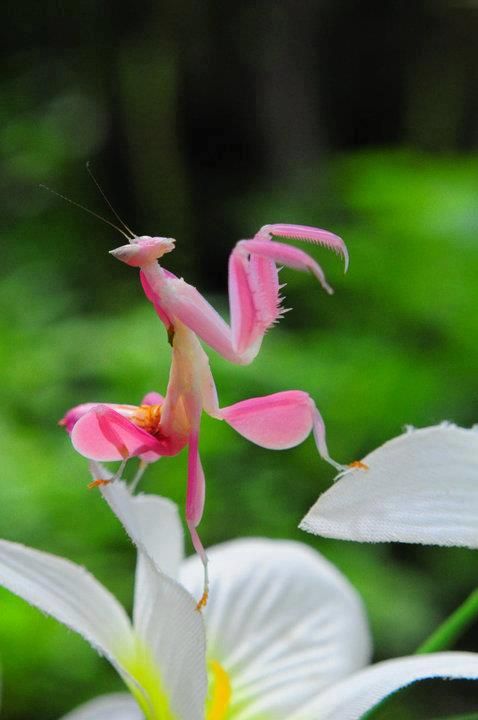
Hymenopus coronatus is a mantis from the tropical forests of Southeast Asia. It is known by various common names including walking flower mantis and (pink) orchid mantis.
This species mimics parts of the orchid flower. The four walking legs resemble flower petals, and the toothed front pair is used as in other mantises for grasping prey.
H. coronatus shows some of the most pronounced size sexual dimorphism of any species of mantis; males can be less than half the size of females. The female predatory selection is the likely driving force behind the development of the extreme sexual size dimorphism. Prior to development of its camouflage, the female mantis implements ambush predation to allow it to hunt larger pollinating insects. An example of this ambush predation is the orchid mantis's ability to ambush foraging butterflies, a fairly large prey, which it captures using its pair of toothed arms and powerful bite. As the female orchid continues to develop, much of its dramatic increase in size can be attributed to predatory selection and ambush predation.
First-stage nymphs mimic bugs of the family Reduviidae, which have a powerful bite and are foul-tasting.
The mantis can change its colour between pink and brown, according to the colour of the background.
Advertisements
02 February 2022
Advertisements



